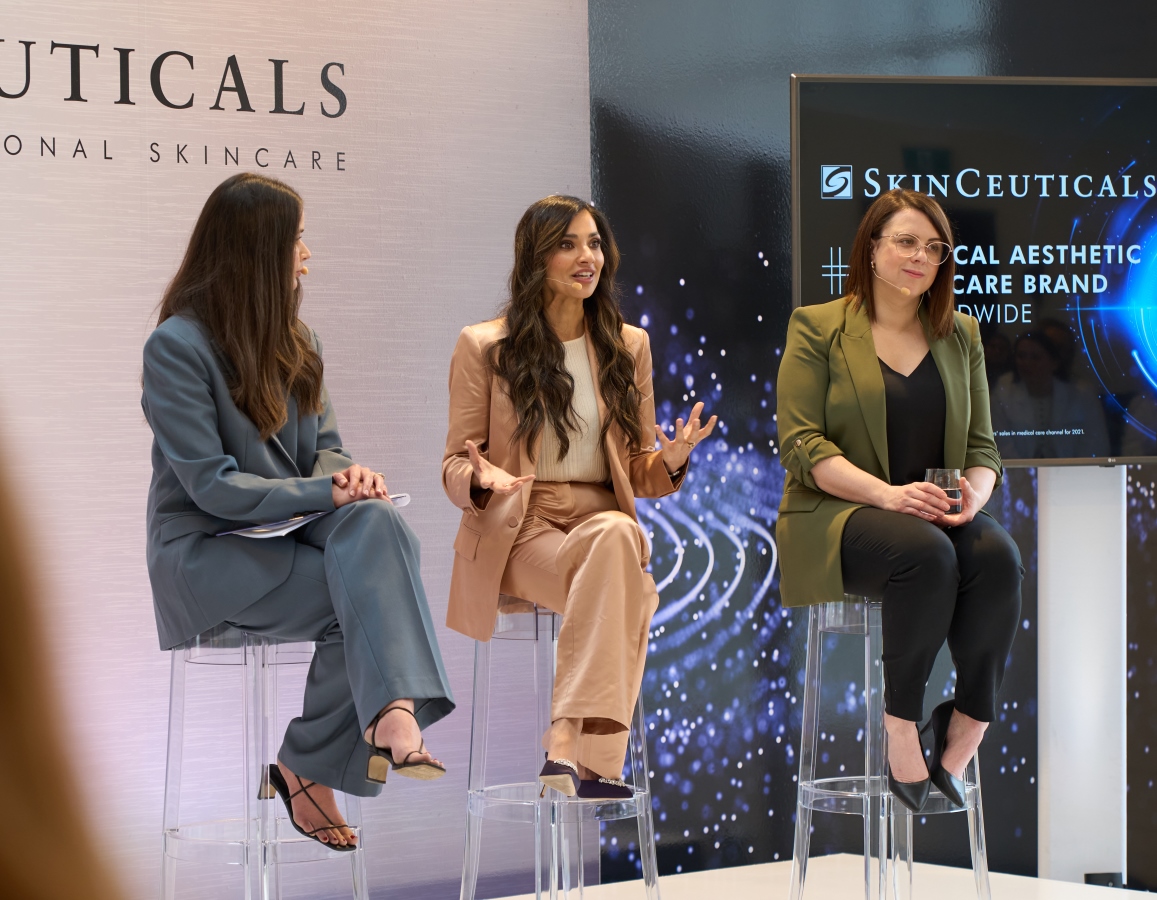In the context of skincare, glycation is often discussed in relation to ageing. Glycation is a chemical reaction that occurs when sugars, including glucose or fructose, react with proteins, fats, or DNA in the body.
This reaction results in the formation of advanced glycation end products (AGEs), which are compounds that can lead to damage to collagen and elastin fibres in the skin, causing it to become less elastic and more prone to wrinkles.
This process is believed to contribute to the visible signs of ageing, such as fine lines, wrinkles, and loss of skin firmness.
SkinCeuticals recently hosted a Skin Lab session, hosted by Sara Crompton with industry guest speakers Dr Amy Chahal, a cosmetic physician and Dr Tania Romano, SkinCeutials Head of Medical & Education.
Guests were guided through an informative session that uncovered the advancement the team is making in skin science, focused on the process of glycation and collagen production in the skin and patented ingredient, Proxylane, developed for the new A.G.E Interrupter Advanced.
Dr Chaha explained the difference between extrinsic ageing, also known as external ageing, and intrinsic ageing, also referred to as chronological ageing. Some common extrinsic ageing factors include UV radiation or sun damage, pollution, smoking and an unhealthy lifestyle such as a poor diet, lack of exercise, excessive alcohol consumption, and inadequate sleep.
Meanwhile, intrinsic aging is largely determined by genetics and can’t be completely prevented, she said.
Dr Chaha said that both extrinsic and intrinsic ageing factors contribute to the overall appearance and condition of the skin as we age.
Dr Romano said SkinCeuticals was “very much a brand backed by science”.
“We have a huge R&D team that work in the US, always keeping up to date with what’s in the literature, what’s happening in skincare science and how that can be incorporated into our products so that we have the most efficacious products on the market. And over the last 15 years, there’s been new advances in skin glycation and technology and obviously, as a brand we wanted to incorporate that into optimising the formula looking at what are the new ingredients that have come out of research, and how those can be included, again for a more efficacious product.”
Images from the Skin Lab below:


















Read the current issue of our digital magazine below:
- For more news and updates, subscribe to our weekly newsletter
- Follow us on Instagram
- Like us on Facebook
- Connect with us on LinkedIn

